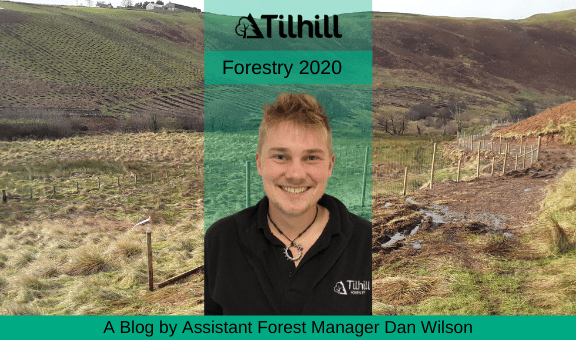In an interesting guest spot on Mark Avery’s blog, Ian Parsons, Freelance Writer and previously a Ranger with the Forestry Commission, emphatically preaches the virtues of ensuring trees are planted for the right reasons. He refers to the myriad of promises to plant millions of trees during the recent election campaign, lambasting these ambitious government planting targets with accusations of planting willy nilly without having specific strategies in mind.
Whilst this is all very thought provoking, it’s difficult to reconcile this proposal with Parsons’ further ponderings on the species Bishop Pine. He correctly suggests that it is a fast-growing species that could help speed up our climate change mitigation desires when it comes to tree planting, but this fact, together with its multitudinous branching results in poor quality timber. Parsons’ suggestion therefore is to plant this tree species in areas such as roundabouts and business parks, enabling the rapid capturing of the carbon whilst leaving more suitable land for planting trees with greater commercial viability.
However, Bishop Pine is defined as having a severely restricted range and would therefore be a surprising appearance in such locations as has been suggested. This concept would support the ideology of trees being planted for the right reason, but I would have to question it being the right tree in the right place – another very important factor that must be taken into consideration.
I’ve mentioned my enthusiasm for Agroforestry in a previous blog and harped on about my desire to see diversification of land use. In the wake of the possible loss of EU subsidies, currently keeping many farms afloat, the utilisation of poorer grade grazing hills seems like the common sense approach to remaining prosperous whilst aiding climate change mitigation.
For example, we need to shrug off our embarrassment when it comes to discussing the sanctity of grouse moors. Mark Ruskell, MSP highlights that up to a fifth of Scotland’s land use is dedicated to heather moorland whose primary focus is shooting. Without casting any aspersions on the sport itself, the use of land doesn’t seem to fit with current climate objectives.
A report by the Committee on Climate Change (CCC) calls for fundamental changes in land usage throughout the UK in order to meet net zero targets. CCC recommend that a fifth of agricultural land is taken out of production and dedicated to afforestation.
Surely though, it would be a lot easier to simply leave things as they’ve always been? Why upset the apple cart by asking difficult questions and proposing diversification of land use where it may not be desired?
The startling answer is that the UK is the world’s second largest net importer of timber and forest products. That’s right, the country who has given up its trade agreements with the EU imports a whopping 80% of all timber used.
The dirty secret is that it is in fact Brexit which has led to all parties in the 2019 election run promising record numbers of trees to be planted. Frankly, we will no longer be able to afford the current UK model of importing goods and exporting knowledge because the chances are, imported goods will soon come with a hefty price tag. Couple this fact with our ambitious climate change policy for the UK and we need to get planting trees.
I would be a firm advocate of a concerted and ambitious push towards intelligently designed and well managed forestry as it is the most effective way to rapidly move towards the self-sufficiency required of our new economic climate.
When planned well, forestry can meet many objectives at once and needn’t be restricted to specific strategies as Parsons insists. Additions of scrub in upper margins, riparian native broadleaves along water courses, commercial stands in fertile soils, engineered open spaces and well-chosen alternative species for diversity; a forest can not only aid in climate change, provide habitats and biodiversity but also provide economic incentive for land owners and also meet the timber demands of the UK as a whole.
For reference:
https://markavery.info/2020/01/09/guest-blog-planting-trees-by-ian-parsons/
https://www.gwct.org.ukhttps://www.tilhill.com/media/350583/An-Economic-Study-of-Grouse-Moors.pdf
Find out more about our Woodland Management



